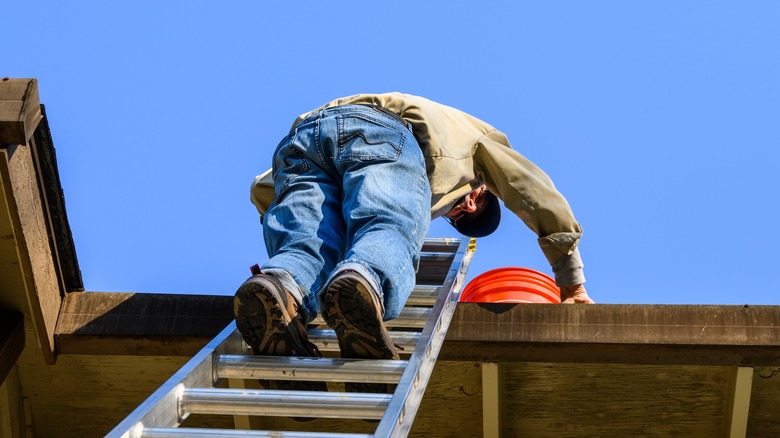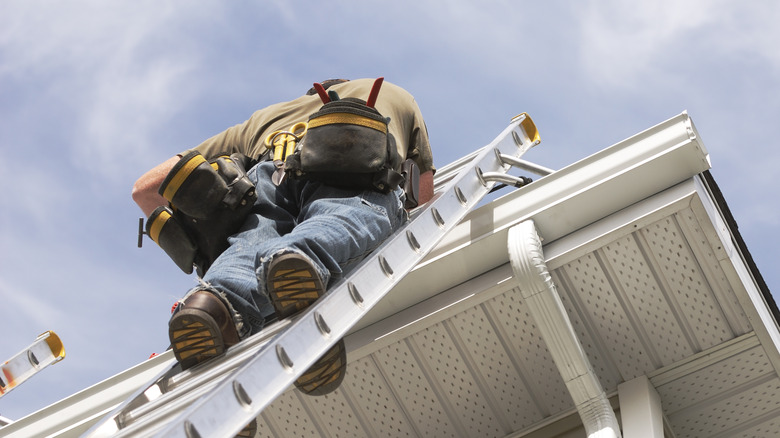Attaching Ladder Locks To Gutters: Is It Safe, Or Is There A Better Way?
We may receive a commission on purchases made from links.
The statistics for ladder accidents are shocking. According to the American Academy of Orthopedic Surgeons, half a million people every year are injured, and 300 are killed. Whether you're painting the exterior of your home or up on the roof line cleaning out the gutters, anything that improves ladder safety has to be a good idea. Recently, the Lock Jaw Ladder Grip has been getting a lot of attention, but is attaching ladder locks to gutters safe, or should you be doing something else?
The Lock Jaw Ladder Grip is not the only device designed to secure the ladder to a building, but it is probably the fastest and easiest to use. According to the manufacturer, it can take just 5 seconds. The unit also looks robust, but then it ought to. It's currently $129 at Amazon; it's not cheap, but that's still a small price to pay for your safety.
The big questions are: do they work, and are they safe? Although we couldn't find test results from any official safety organizations, feedback from customers is overwhelmingly positive. Comments like "works perfectly" and "makes you feel safe and confident" are typical. Lock Jaw points out that their device meets US Occupational Health and Safety Administration (OHSA) standards for ladder accessories ANSI-ASC 14.8-2013. This covers ladders made from wood, metal, and reinforced plastic. The company website also has instructions and demonstration videos for safe use.
Alternative ways to secure a ladder, plus important safety advice
So, how can you make sure your ladder is safe without a ladder lock? The key is understanding what causes ladder accidents in the first place so they can be avoided. The biggest danger when using a ladder is lateral (sideways) movement. OSHA recommends only using ladders when the surface is stable and level unless the ladder has been secured to a stable surface at the top or bottom. Roof hooks and ladder stability devices are widely available. The ladder should be placed using a 4:1 ratio. So if you have an 18-foot ladder, for example, the base should be 4.5 feet out from the wall.
The other leading causes of problems are ladders that are in poor condition and bad climbing techniques. Check your ladder before you use it. If rungs are loose or there are other signs of damage, then it should be replaced. Climb using 3 points of contact: always have either two hands and one foot or two feet and one hand on the rungs. Tools should be on a tool belt, not in your hands. Attaching ladder locks to gutters might be a good idea, but whether you're painting upstairs windows or clearing invasive ivy from your walls, a few basic precautions should be enough to ensure your safety.

